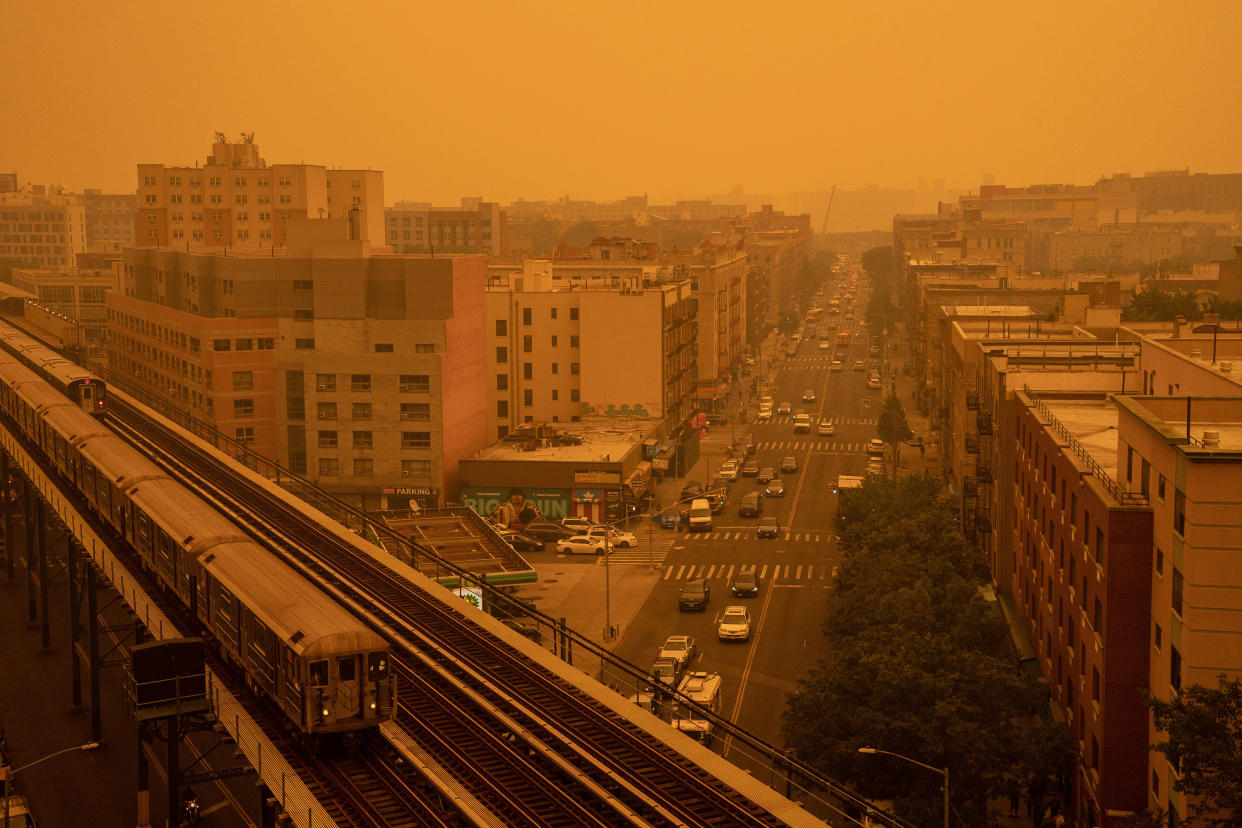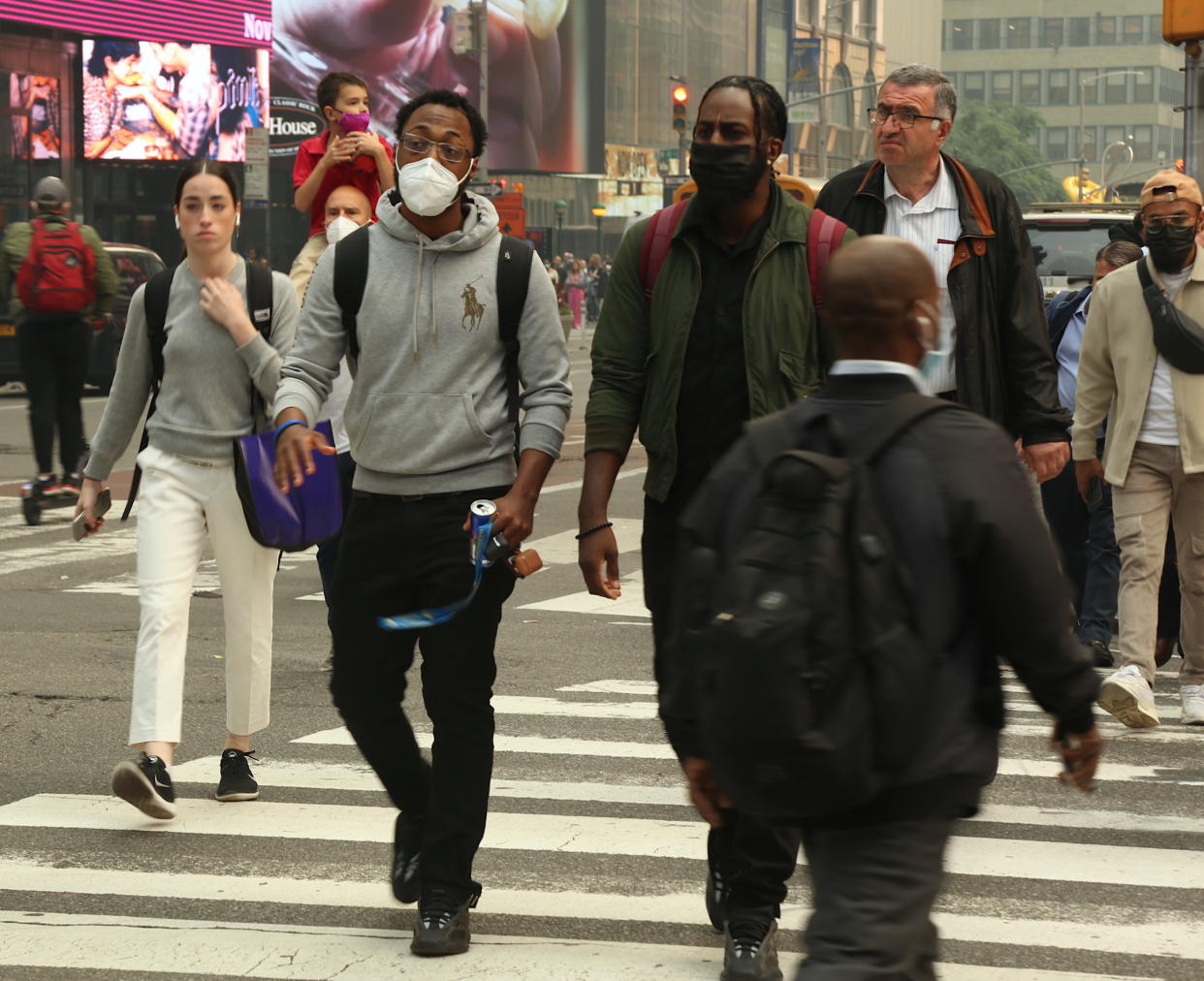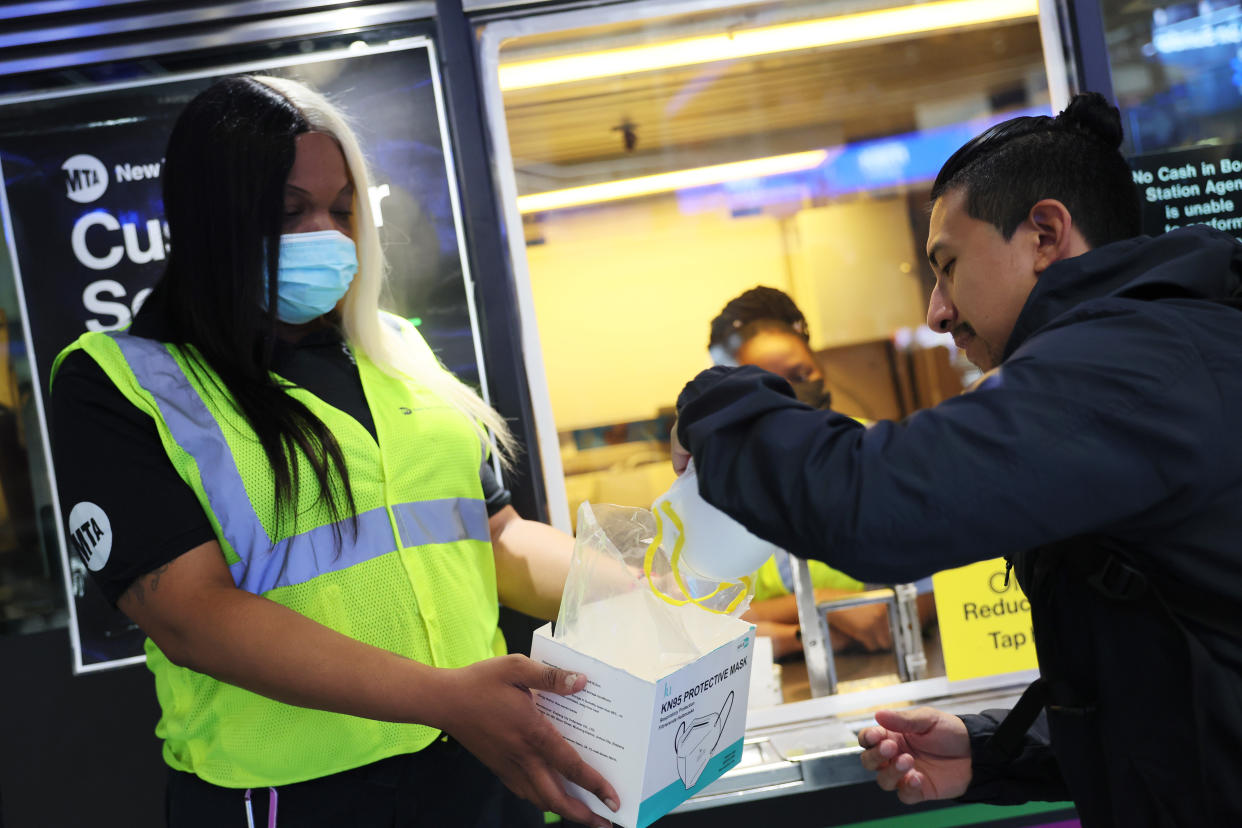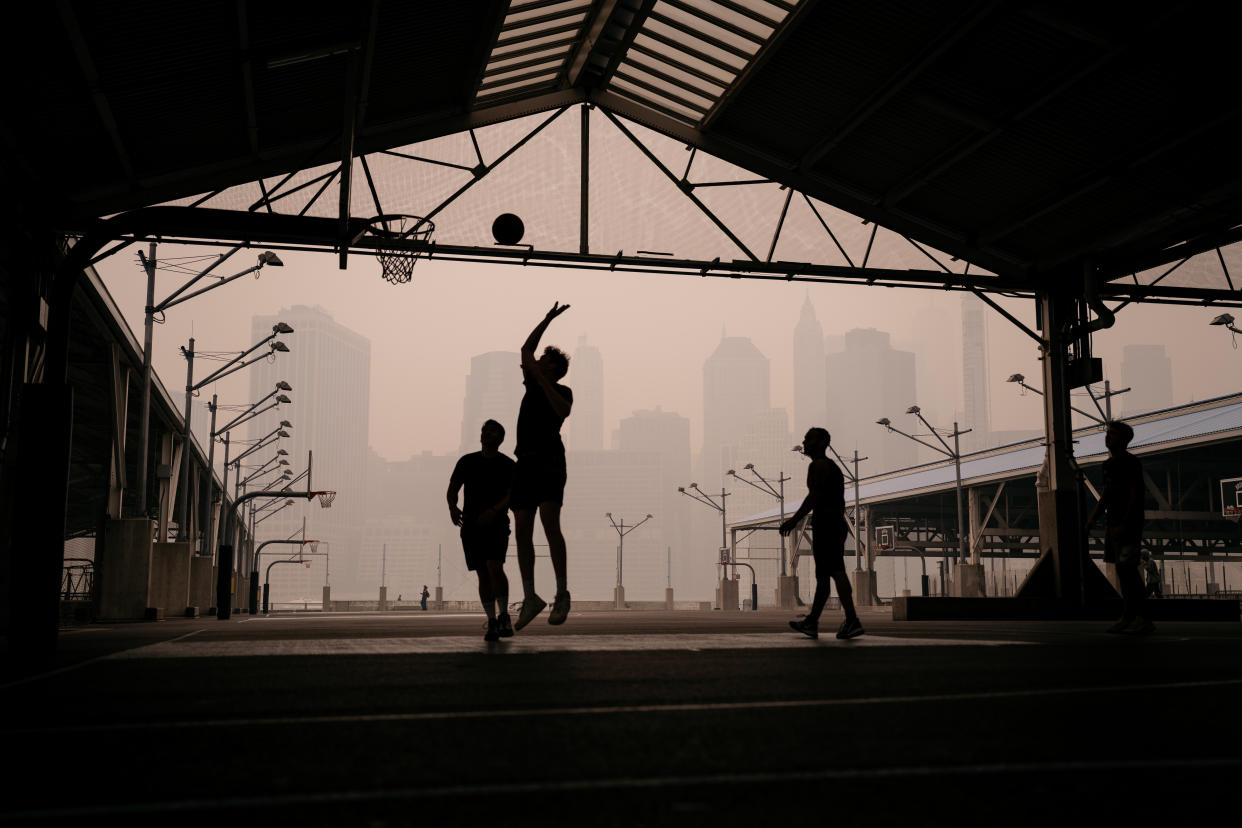Why the wildfire smoke affects the health of poor people and communities of color the most

As millions of Americans across the Midwest and the Northeast on Thursday woke up to hazy skies and significant air pollution for a third straight day caused by smoke drifting from hundreds of Canadian wildfires, the impact of the smoke has not been uniform.
Poorer people and many communities of color already at a higher risk of particle pollution in their everyday lives, experts say, are disproportionately being affected by this latest wave of smoke infiltrating the region.
“Whether it’s diesel trucks and buses in people's neighborhoods, commuter cars or power plants — there are a lot of communities that have already been impacted by air pollution,” Sacoby Wilson, a public health professor at the University of Maryland, told Yahoo News. “This additional pollution from wildfires is making that situation worse.”
For many city inhabitants without quality air filtration and access to adequate health care options, living near sources of air pollution like major roadways, industrial facilities and ports can lead to a variety of health effects ranging from asthma to reduced lung function to cardiovascular disease. In the most extreme cases, it can lead to premature death.

Study reveals disparities
A study from the Harvard T.H. Chan School of Public Health last year found that certain groups — Blacks, Asians, Hispanics, Latinos and low-income populations — are being exposed to higher levels of dangerous fine particulate air pollution than other groups. Most often these communities are more densely populated, live in closer proximity to pollution-generating facilities and/or have jobs like bus drivers or in agriculture that expose them to the elements more often than others.
The research linked 17 years of demographic data with findings on fine particulate pollution from across the U.S. to reveal stark disparities in air pollution along racial and economic lines.
“Our findings regarding relative disparities indicate the importance of strong, targeted air-pollution-reduction strategies, not only to reduce overall air-pollution levels, but also to move closer toward the EPA’s aim to provide all people with the same degree of protection from environmental hazards,” Abdulrahman Jbaily, a former postdoctoral researcher at the Chan School and co-author of the study, said.

Wilson calls the challenges facing the most at-risk populations a “vulnerability issue” that will only worsen over time due to climate change, which, research shows, has resulted in warmer, drier conditions that result in longer and more active fire seasons across North America.
“The reason why we have to really address climate change is because air pollution knows no boundaries,” Wilson said.
Canadian wildfires impact
Overall, more than 430 active wildfires are burning across Canada, according to the Canadian Interagency Forest Fire Centre, with at least 230 of them currently out of control. Weather forecasters expect wind patterns and precipitation Thursday evening into Friday to dissipate the smoke in the region, but Canadian fire officials are having challenges getting the fires under control, meaning more smoke could soon return. This creates an issue for everyone.

The air pollution as a result of the fires has been so bad that New York City and Detroit ranked within the top 11 in the world on the air quality index as of 3 p.m. ET on Thursday, ahead of cities like Wuhan, China, and Doha, Qatar, according to IQair, a Swiss air monitoring service. Both cities usually do not rank in the top 3,000, prompting concerns from experts over serious exposure to poor air quality for “sensitive” groups.
“When there’s smoke in the air and you can see it or smell it, you’re being exposed to harmful pollution,” William Barrett, national senior director of clean air advocacy with the American Lung Association, told Yahoo News, noting that what’s in the fire and what’s not is hard to determine.
Pollutants in the smoke could range from vegetation or trees to homes or vehicles — making it nearly impossible to know what someone is being exposed to.
Human role in collective toll
Nearly 85% of wildland fires in the United States are caused by humans. With more people moving into wildfire areas, many experts see a direct correlation to an increase in the amount of fires likely to take place.

Alistair Hayden, an assistant professor at the Department of Public and Ecosystem Health at Cornell University, sees the most stark disparities in air pollution among two groups: those most likely to breathe the smoke — people with jobs outdoors or without homes — and those most likely to have bad health outcomes when they breathe the smoke — children, older adults and people with preexisting conditions.
“Across these two groups there’s a disproportionate occurrence of heart and lung conditions across different communities that’s further exacerbated by living in an already pollution-burdened area, which makes a person more likely to have those preexisting conditions,” Hayden told Yahoo News. “They're more likely to experience bad health outcomes when the wildfire smoke hits.”
